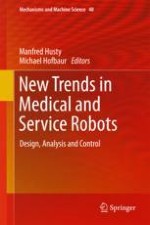2018 | OriginalPaper | Buchkapitel
Rob’Autism: How to Change Autistic Social Skills in 20 Weeks
verfasst von : S. Sakka, R. Gaboriau, J. Picard, E. Redois, G. Parchantour, L. Sarfaty, S. Navarro, A. Barreau
Erschienen in: New Trends in Medical and Service Robots
Aktivieren Sie unsere intelligente Suche, um passende Fachinhalte oder Patente zu finden.
Wählen Sie Textabschnitte aus um mit Künstlicher Intelligenz passenden Patente zu finden. powered by
Markieren Sie Textabschnitte, um KI-gestützt weitere passende Inhalte zu finden. powered by
